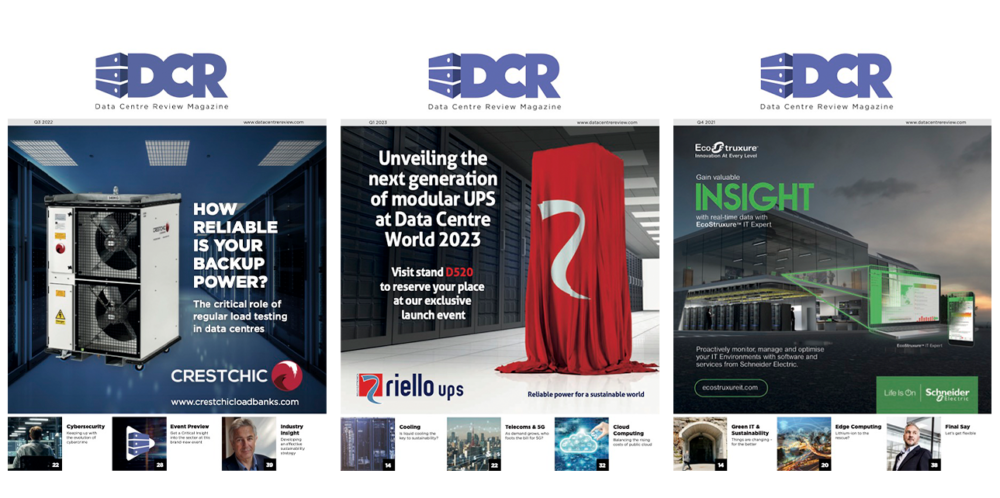Jad Jebara, President & CEO at Hyperview, argues that mounting technical debt is choking efficiency – and insists that switching to cloud‑based, automated DCIM is the key to a resilient, future‑proof data centre.
The data centre industry is facing a pivotal moment, weighing critical decisions about the future of infrastructure management. With IT renewals looming, organisations must decide whether to continue patching together aging infrastructure or invest in future-ready solutions.
The challenge at hand? Technical debt – the cumulative cost of maintaining outdated systems – is quietly eroding efficiency, inflating operational expenses, and hindering scalability. While the concept is often associated with software development, its impact on data centre operations is profound, from limiting sustainability efforts to forcing reactive, costly modernisation efforts.
Legacy systems and outdated manual processes are buckling under the pressure to secure, sustain, and streamline operations – what we call the three S’ – while meeting today’s challenges around compliance reporting, talent shortages, edge deployments, and cybersecurity risks.
According to IDC, only 24% of organisations confidently track their technical debt. The remaining majority risk being caught in a cycle of inefficient, short-term fixes. To break free, data centre operators and enterprises must rethink their approach. Rather than perpetuating legacy inefficiencies, now is the time to prioritise cloud-based, automated solutions that enhance visibility, scalability, and long-term resilience.
The hidden costs of technical debt
Many data centres continue to rely on legacy systems designed for an era that no longer reflects today’s demands. These outdated infrastructures come with significant hidden costs.
Operational inefficiency is one of the most pressing challenges. Manually tracking assets, managing capacity, and responding to incidents not only drains valuable resources but also increases the likelihood of downtime. Traditional infrastructure management methods can’t keep pace with growing workloads and evolving sustainability requirements, forcing organisations into a reactive rather than proactive stance.
Beyond inefficiency, scalability is another major concern. As businesses expand, legacy systems struggle to adapt, weighed down by rigid architectures, custom integrations, and outdated software that create bottlenecks. This lack of flexibility makes seamless scaling a challenge, limiting an organisation’s ability to meet increasing demands without significant – and often costly – overhauls.
Perhaps most critically, outdated infrastructure presents a substantial barrier to sustainability. The inefficiencies inherent in legacy systems directly impact energy consumption and carbon emissions.
Without real-time insights into power usage and equipment performance, data centres are unable to optimise energy efficiency or align with environmental targets. This misalignment not only contributes to excessive operational costs but also hinders compliance with increasingly stringent sustainability regulations.
For organisations reliant on outdated infrastructure, these factors culminate in a persistent drain on resources and agility. However, modern solutions offer a way forward.
Legacy systems: a roadblock to efficiency
Outdated software and fragmented processes don’t just slow operations – they introduce security risks, compliance challenges, and excessive costs. The reliance on manual reporting, disparate tools, and reactive maintenance prevents organisations from achieving operational excellence.
Consider the impact of incomplete visibility. Without an integrated, cloud-based DCIM solution, operators lack the real-time insights needed to make informed decisions. This leads to: Unplanned downtime leads to increased mean time to repair (MTTR), while inefficient resource allocation results in stranded capacity that remains underutilised. Additionally, without accurate and timely reporting, meeting regulatory compliance becomes increasingly difficult, exposing organisations to operational and financial risks.
As data centre workloads surge – especially with the rise of AI-driven applications—the inability to dynamically manage infrastructure in real time becomes a critical liability.
Why now is the time to reassess
The status quo is no longer sustainable. With IT contract renewals and evolving industry regulations, organisations have a strategic opportunity to move beyond piecemeal upgrades and embrace a holistic approach to modernisation.
Key considerations include:
- Cost vs. Value: Does maintaining a legacy system make financial sense in the long term, or is it driving up OPEX while limiting strategic growth?
- Compliance Risks: With increasing regulatory scrutiny on energy efficiency and cybersecurity, can outdated infrastructure keep up with evolving standards?
- Competitive Advantage: Organisations that proactively modernise gain a strategic edge, ensuring operational agility and readiness for emerging technologies.
By acknowledging these factors, data centre operators can shift from reactive to proactive decision-making – positioning themselves for long-term success.
The role of cloud-based, automated solutions
Modern DCIM platforms provide the antidote to technical debt. Cloud-based, automated solutions empower data centre operators with enhanced visibility, seamless scalability, and improved efficiency. By leveraging real-time monitoring and predictive analytics, organisations can proactively identify inefficiencies, eliminating blind spots that often lead to costly downtime. AI-driven analytics enable intelligent forecasting, optimising capacity planning and preventing resource wastage before it becomes a financial burden.
Compliance reporting frameworks like CSRD and EED are driving requirements to share data securely, in an auditable manner, and on a timely basis in a bidirectional fashion. For example, per-minute sensor data must be retained for up to three years at maximum resolution. Legacy systems simply aren’t built to store, analyse, or share data at this level – making cloud-based solutions essential for meeting evolving regulatory expectations.
Cloud-native platforms remove the limitations of traditional software, allowing seamless expansion without the need for disruptive rip-and-replace cycles. This agility enables operators to scale dynamically in response to demand fluctuations, avoiding the rigidity that plagues legacy systems. Moreover, automation reduces manual intervention, optimises energy consumption, and enhances uptime – driving down costs while improving operational resilience.
Supporting edge deployments and the teams responsible for monitoring, analysing, planning, upgrading, and configuring infrastructure is another area where legacy systems have become an anchor. Without modern tools, teams struggle to efficiently sustain, secure, and streamline operations – hindering their ability to respond to dynamic IT environments.
For example, AI-powered DCIM solutions can detect energy inefficiencies, automate asset tracking, and preemptively flag potential failures before they disrupt operations. Automated workflows reduce the dependency on human intervention, minimising errors and improving overall reliability. These solutions not only improve efficiency but also support broader sustainability objectives by providing actionable insights into carbon footprint reduction.
Beyond efficiency and sustainability, automation strengthens security and compliance. Integrated monitoring capabilities ensure regulatory adherence, mitigating risks associated with outdated reporting mechanisms. Organisations can enforce best practices in cybersecurity, continuously scanning for vulnerabilities and ensuring compliance with evolving industry standards.
Ultimately, by shifting to cloud-based, automated infrastructure management, data centre operators can transition from firefighting recurring technical debt to building a foundation for long-term innovation. This transformation allows organisations to maintain agility in an increasingly complex digital landscape, ensuring their infrastructure is resilient, adaptive, and future-ready.
Future-proofing data centre operations
The choice is clear: continue accumulating technical debt or take decisive steps towards a more efficient, scalable future. As IT leaders assess their infrastructure strategies, the benefits of modern, cloud-based DCIM solutions are undeniable. By investing in automation, visibility, and sustainability, organisations can escape the limitations of legacy systems – paving the way for long-term growth and resilience.
Now is the time to act. The future of data centre management isn’t just about keeping the lights on – it’s about ensuring infrastructure is intelligent, adaptable, and prepared for what’s next.


